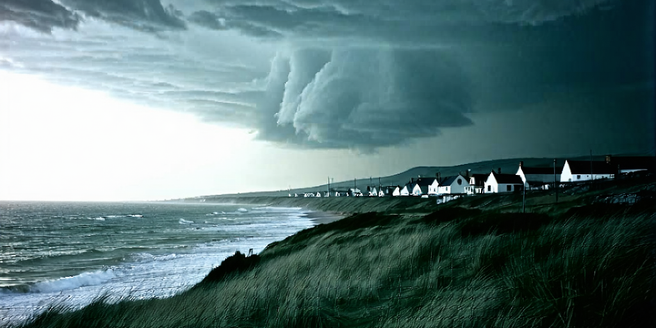
Understanding Atmospheric Drama in Photography
Atmospheric drama in photography is the art of capturing scenes that evoke intense emotions through the interplay of natural elements. The key to understanding this concept lies in recognizing how light, weather conditions, and location work together to create a compelling narrative. Contrasts in lighting, such as those found during golden hours or stormy weather, tend to enhance the visual impact. These factors work to transform ordinary scenes into extraordinary, mood-filled compositions. By focusing on elements like mist, fog, or dramatic cloud formations, photographers can convey a sense of awe and wonder. Mastering these techniques gives photographers the tools to craft images that resonate emotionally with viewers, inviting them to feel as if they are part of the scene. This understanding is foundational for anyone aiming to capture the essence of atmospheric drama.
The Role of Light and Shadow in Creating Mood
The interplay of light and shadow is crucial in setting the mood of a photograph. Light serves as a tool that reveals the subject, while shadows add depth and dimension. Together, they create a dynamic range of tones and textures that influence the viewer’s emotional response. For instance, soft, diffused light can evoke tranquility, while harsh light and deep shadows often create tension and drama. Understanding how to manipulate these elements can vastly improve a photographer’s ability to evoke specific moods. By experimenting with different times of day, weather conditions, and angles, photographers can discover new ways to use lighting to their advantage. This exploration helps in shaping the atmosphere and guiding the emotional journey of the viewer, making light and shadow powerful allies in composition.
Choosing the Right Composition Techniques
Choosing the right composition techniques is crucial for effectively conveying atmospheric drama in photography. Techniques such as the rule of thirds, leading lines, and framing can guide the viewer’s eye and enhance the story being told. The rule of thirds helps balance the image, leading lines draw viewers into the scene, and framing can focus attention on key elements. These compositional tools work together to create a sense of space and dimensionality, drawing the viewer in. By skillfully applying these techniques, photographers can direct the emotional impact of the image. Additionally, experimenting with different perspectives and vantage points allows photographers to uncover unique compositions that heighten the atmospheric drama. Ultimately, mastering composition techniques empowers photographers to convey powerful stories that resonate on an emotional level with the audience.
Incorporating Natural Elements for Impact
Incorporating natural elements in photography can significantly amplify the atmospheric drama captured in an image. Elements such as water, trees, or mountains can serve as compelling subjects or backdrops, adding texture and depth to the composition. The movement of water, the swaying of trees, or the vastness of a mountain range can convey a dynamic sense of place and emotion. By tying these elements into the overall composition, photographers can create more engaging and impactful photographs. Observing how different elements interact with light and each other over time allows photographers to capture moments of heightened beauty and emotion. This careful blend of natural components and timing can transform an ordinary scene into an extraordinary realm, inviting viewers to connect emotionally with the natural world presented before them.
Utilizing Color to Enhance Emotional Depth
Color is a powerful tool for enhancing the emotional depth of a photograph and highlighting atmospheric drama. The choice of color scheme can set the tone of the image, evoke specific emotions, and influence the viewer’s perception. Warm tones like reds and oranges often convey warmth and passion, while cooler tones such as blues and greens tend to suggest calmness or melancholy. By carefully selecting the color palette, photographers can direct the emotional response to the image. In addition, understanding how colors interact—considering complementary and analogous color schemes—can enhance the overall coherence and ambiance of the photograph. Utilizing color effectively allows photographers to craft images that not only capture attention but also resonate deeply with viewers, adding an extra layer of meaning and emotional impact to the composition.
Editing Tips for Amplifying Atmospheric Effects
Editing is a crucial step in amplifying the atmospheric effects in photography, allowing photographers to enhance or alter elements to better convey their intended mood. Techniques such as adjusting contrast, saturation, and clarity can significantly alter the ambiance of an image. By emphasizing shadows and highlights, photographers can add drama and focus attention on key areas. Color grading is another powerful tool, as it can shift the emotional tone by altering the color balance. Subtle adjustments can be made to enhance fog, mist, or reflections, adding depth and intrigue to the scene. However, restraint is key—over-editing can lead to unrealistic images that lose their emotive power. Mastering these editing techniques enables photographers to refine their compositions, ensuring that their vision for atmospheric drama is fully realized in the final edit.
